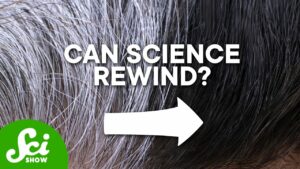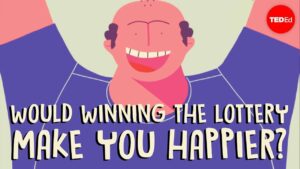This video discusses the relationship between protein consumption and hunger. It highlights a study conducted in 1928 where newly weaned infants were able to choose their own diets and consumed a variety of foods, including meats, milk, eggs, fruits, and vegetables. The study found that the infants ate in patterns that provided them with a nutritionally complete diet. The video also introduces the protein leverage hypothesis, which suggests that the body craves more food when it is not receiving enough protein. It presents evidence from various studies that support this hypothesis and emphasizes the importance of protein in maintaining satiety and overall health. The video concludes by discussing the optimal protein intake and debunking the notion that high protein diets are harmful to the kidneys and liver. It also mentions an electrolyte salt pack called Element that can help reduce cravings and maintain energy levels.

Our Summaries are written by our own AI Infrastructure, to save you time on your Health Journey!
Key Insights:
- Infants have the instinct to choose foods that provide the necessary proteins, vitamins, and minerals for their growth and development.
- The protein leverage hypothesis suggests that our bodies compel us to keep eating to get more protein, leading to increased hunger on low-protein diets.
- Studies have shown that higher protein intake can lead to reduced calorie intake, weight loss, and lower hunger scores.
- Cheap, low-protein foods may contribute to obesity by keeping people hungry due to insufficient protein intake.
- The RDA for protein is the minimum required to prevent deficiencies, but recent research suggests higher protein intake for optimal health.
- There is no established upper limit for protein intake, and evidence suggests that high protein diets have no negative health effects.
- The idea that protein is bad for the kidneys and liver is unfounded, as the association comes from pre-existing kidney disease, not the protein itself.
- Amino acids, the building blocks of protein, have important functions in cell signaling, hormone production, and preventing excess fat accumulation.
- Salt cravings can be satisfied by consuming electrolytes, such as those found in the sponsor product, element.
Transcript
If you’re hungry all the time, you probably need more protein. Why? Well, what drove an 11-month-old boy to eat salt straight out of a salt shaker? And why did an infant in the 1920s choose to drink straight cod liver oil, something that kids notoriously hate?
Well, here’s a 1928 study on newly weaned infants who completely decided their own diets. They were presented with a wide variety of meats, milk, eggs, fruits, vegetables, juice, and cereals, and they either pointed at or just grabbed what they wanted. If the babies could pick the right foods, they could get all the proteins, vitamins, and minerals that they needed.
The infants ate in weird patterns. They ate a bit of everything, but depending on the week, they would eat astonishingly large amounts of beef. Then the next week, they might be eating tons of eggs. And then they would switch to cereal. The next week, they ate a wide variety of foods, even choosing to eat bone marrow, liver, kidneys, and raw beef. In the end, the babies grew to be very healthy. Five babies entered the study with rickets, but by the end, they all had beautifully strong bones.
The researchers analyzed the content of all 36,000 meals the babies ate, and they found that they were indeed choosing a variety of foods that made for a nourishing and nutritionally complete diet. One child who was vitamin D deficient when first introduced to the study chose to drink straight cod liver oil, which is rich in vitamin D.
In a different 1940 study, an 11-month-old boy who had a disease that prevented him from retaining sodium chose every day to eat an abnormal amount of salt all by himself. He ate the salt straight out of the salt shaker, and while he didn’t eat crackers, he would lick the salt off of them. These old studies support the idea that our bodies can, to some degree, make us crave foods that we need the most.
This is where something called the protein leverage hypothesis comes in. It basically says that because the body knows it requires a lot of protein, it will compel you to keep eating to get more protein. Eating the same number of calories, you will be hungry on a low-protein diet than you would be on a high-protein diet.
So, for example, you might be full for a while after a 400-gram rib-eye steak but might be craving some snacks not too long after eating two Big Macs, even though both of these meals got you about 1,140 calories. The difference is the rib-eye steak is giving you 96 grams of protein, but the Big Macs only gave you 52 grams of protein.
There’s actually a lot of evidence for this protein leverage idea. Every single human obesity study you will ever look at in the history of medical literature, the more protein people ate, the better. A study from just this year found that, on average, each 1% increase in protein lowers total calorie intake by about 1%.
A 2005 study found that people eating a 30% protein diet lost more weight and had lower hunger scores than people eating a 15% protein diet. A 2011 study found that people ate more calories if they ate a 10% protein diet instead of a 15% protein diet. In that study, the people on the low-protein diet were craving more savory foods. Their body was craving things that taste like they should have protein in them.
People think it’s crazy that I’ve eaten 200 grams of protein for almost 20 straight years every single day. I like eating protein. It fills me up. I feel good on it. That’s why I do it. I think we all understand to some degree that protein is very filling. I bet you could imagine yourself polishing off 1,500 calories of pizza and ice cream pretty easily, but 1,500 calories of just lean beef will leave you sweating and struggling to swallow in between deep breaths. Oh, here come the meat sweats.
There’s a couple of ways protein may blunt your appetite. One idea is what’s called the „aminostatic hypothesis,“ which says essentially the body is always trying to maintain a certain level of amino acids. When it senses that there are not enough amino acids present, it will make you hungry. And of course, amino acids come from the protein that we eat.
Here’s a really cool graph from a quite old study that shows that appetite and amino acid concentrations in the body are tightly linked. When amino acid concentrations go up, appetite goes down. When amino acids go down, appetite goes up. Other research has found that eating protein simply increases the secretion of anorexigenic hormones, hormones associated with a reduction of appetite. For example, in one study, where an amino acid mix reduced the appetite of obese adolescents, this was due to an increase in the appetite-suppressing peptide GLP-1. And GLP-1 is likely secreted in response to the intestines sensing the presence of certain amino acids.
Look at pictures or footage of a 1960s beach, and it’s pretty obvious that the obesity epidemic of today is a recent issue. Our food environment has definitely changed in many ways, but could the issue be that we just eat too much cheap food?
Reporting on USDA data, Vox claims that Americans devote just 11% of their household spending to food, a smaller share than nearly every other country spends on food consumed at home alone. Now, part of this is because America is a wealthy nation, so people don’t have to spend so much on food. But considering America spends a lot less than, say, France or Norway, part of it is simply due to the fact that America can simply buy food that is cheaper to produce.
I don’t think you’d be surprised to hear that cheaper food makes you fat. Cheap processed food is loaded with additives, sugar, processed carbohydrates, and seed oils. But what it doesn’t have much of is protein. Protein is not cheap. Protein is actually the most expensive macronutrient.
This study on 106 supermarket foods found that the cost of food increases with food protein density. The more protein a food had, the more expensive it was. Fat and carbohydrates, however, are really cheap. NLSY79 data suggests that as income goes down, obesity goes up. So, of course, cheap foods have all kinds of negative attributes, but maybe cheap, low protein foods are driving people to be fat by keeping them hungry because they’re not getting enough protein.
„What are you eating? I don’t even know. I just know I’m hungry all the time.“
Dr. Ted Naiman has a philosophy on maintaining a healthy weight that is really simple. You just need to improve your protein-to-energy ratio. In this framework, you can think about macronutrients like this: We need protein to build our muscles, maintain our cellular machinery, and so on. It builds us up and maintains our bodies. Fat and carbs, we’ll consider as just an energy source. So, you want to get plenty of grams of protein per calorie of fat and carbs. You want a high protein-to-energy ratio.
For example, a rib-eye steak has plenty of protein and plenty of fat but no carbs, so its protein-to-energy ratio is 0.7. Lean beef has no carbs and even less fat, so its protein-to-energy ratio is higher at 1.0. Then, of course, things with tons of calories relative to protein are going to have really low protein-to-energy ratios. Potatoes and peanuts have a protein-to-energy ratio of just 0.2.
Another way to think about this is if you want a healthy, lean body with a high protein-to-energy ratio, you should eat foods that have a high protein-to-energy ratio. The more overweight and unhealthy you become, the lower the protein-to-energy ratio of your body will become.
So, here’s the next question: Too little protein is definitely a thing, but what is too much protein? The RDA for protein is set at 0.8 grams of protein per kilogram of body weight. That would mean that if you’re a 70-kilogram or 154-pound man, you only need 56 grams of protein. Two Big Macs and a handful of almonds should do the trick. However, what some people don’t realize is that the RDA is the minimum protein required to prevent deficiencies. It is not the optimal protein intake.
Recent research has found that at least double the RDA of 0.8 grams per kilogram is likely where you want to be. This paper argues that at least 1.2 grams per kilogram to 1.6 grams per kilogram of protein is better for health. There’s something called the acceptable macronutrient distribution range, which is set based on epidemiological evidence that suggests consumption within these ranges plays a role in reducing the risk of chronic diseases. As you can see in the chart, while the average American is at least above the lower end of the AMDR, they are very far from the upper end. So, it seems like we really could stand to get more protein.
But what amount of protein is too much? Well, that hasn’t even been established in human randomized control trials optimizing for protein. Those people always do better. It improves satiation, better body composition, healthier lean muscle mass, better insulin and glucose control. Dr. Gabrielle Lyon states that we haven’t seen any negative effects from upper limits approaching 3.3 grams per kilogram, which is four times the RDA. There has not been, to my knowledge, any evidence to support higher levels of dietary protein having any kind of negative effect, ever. One study had women eating over four times the RDA, as much as 3.4 grams per kilogram per day, and they didn’t experience any negative health effects. The U.S. and Canadian Dietary Reference Intake Review concluded there was not sufficient evidence by 2005 to establish an upper limit for how much protein can be safely consumed.
But maybe you’ve heard of this idea that protein is bad for the kidneys and liver. Dr. Stuart Phillips, a professor and Tier 1 Canada Research Chair in Skeletal Muscle Health, said that this idea is totally bogus. There’s no data. There’s no data that links the two, none, not a scrap. He explains that the idea that protein is bad for the kidneys came from the fact that people who already have kidney disease do better on lower protein diets. Though it’s the disease that made the kidneys unable to properly handle protein, not the other way around. That would be kind of like saying because people with prostate cancer have trouble peeing, water causes prostate cancer.
At the end of the day, it should be totally expected that protein increases satiety. Of course, your body makes you eat because it is urging you to get a certain amount of minerals, nutrition, and amino acids. So, if you haven’t gotten the protein your body needs, why would it signal you to stop eating? Protein is obviously a very vital nutrient. It’s much more than just the brick and mortar used to build muscle. Of course, our bodies don’t require protein, but the amino acids that protein is composed of.
This review article on amino acid metabolism, functions, and nutrition lays out that amino acids act as cell signaling molecules, regulate gene expression, act as key precursors for producing hormones and important biological substances like dopamine, serotonin, epinephrine, norepinephrine, and thyroid hormones, just to name a few. And further evidence shows that dietary supplementation with amino acids is beneficial in ameliorating obesity, diabetes, cardiovascular disease, metabolic syndrome, and infertility. And amino acids are beneficial not just for optimizing muscle growth but also for preventing excess fat accumulation in the body. Amino acids have all kinds of important functions. There’s a whole academic journal dedicated to them.
One other thing about hunger: It’s well known that we all have a hunger for salt. When anything from a rabbit or pigeon to a kangaroo, monkey, or human doesn’t get enough sodium from salt, it will develop a marked craving for salty things. So, what people might not realize is that when they’re craving salty, calorie-rich snacks, they might be able to extinguish that hunger by just getting some salt. That’s where this video sponsor, element, comes in. I often have one of their tasty, no-sugar electrolyte salt packs when I find myself craving a snack or something, and it often reduces, and sometimes totally eliminates, my cravings.
Since electrolytes and sodium are a big part of hydration and maintaining energy levels in general, it can really help to replace the electrolytes you lose when you’re fasting, doing a low-carb diet, or if you’re just sweating a lot at the gym. I often feel a lot better if I hydrate myself with an element while drinking my coffee because this reverses the dehydrating effect of the caffeine. Element tastes great, and there’s no junk in it. It’s just a good balance of electrolytes, sodium, potassium, and magnesium, a bit of flavoring, and some Stevia. If you don’t want any flavoring, you can just get the raw, unflavored type.
If you go to drinkLMNT.com/whatI’velearned, you can get a free sampler pack with a new purchase.





